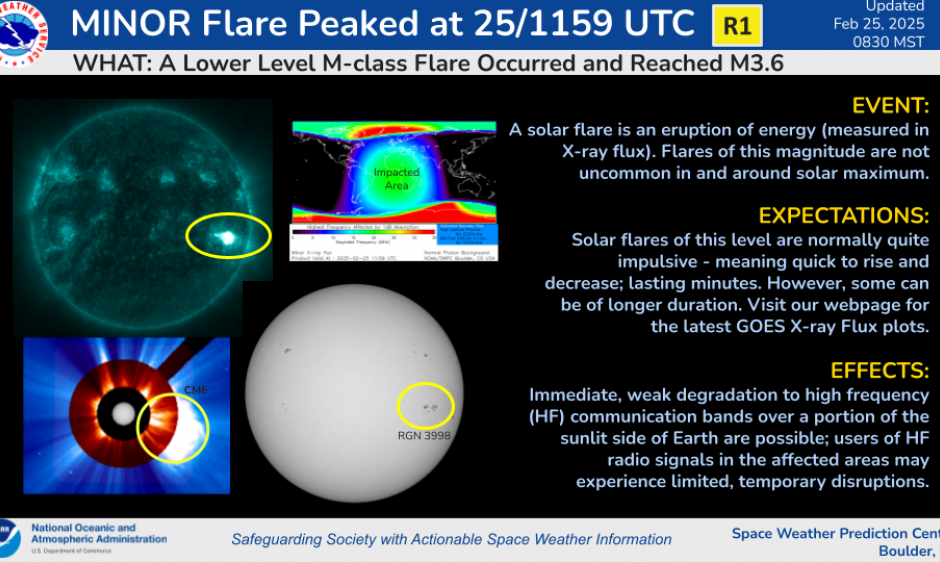
An M3.6 solar flare (R1; Minor) occurred early on 25 February at 6:59 am EST (1159 UTC) from the southwest quadrant of the Sun's visible disk. The source of the solar flare was NOAA/SWPC Region 3998, a moderately complex sunspot group. The R1 event degraded some high frequency (HF) communication bands mainly over the sunlit side of Earth at the time of the flare - which was mainly the eastern Atlantic Ocean and Africa regions. The flare was associated with a coronal mass ejection (CME) as observed in SOHO/LASCO coronagraph imagery. The CME is currently under analysis for determination of any Earth-directed component. Stay informed with the Nation's official source of space weather information.